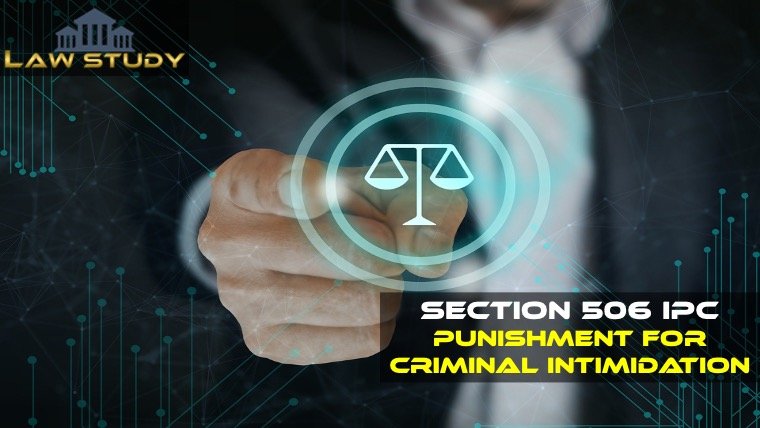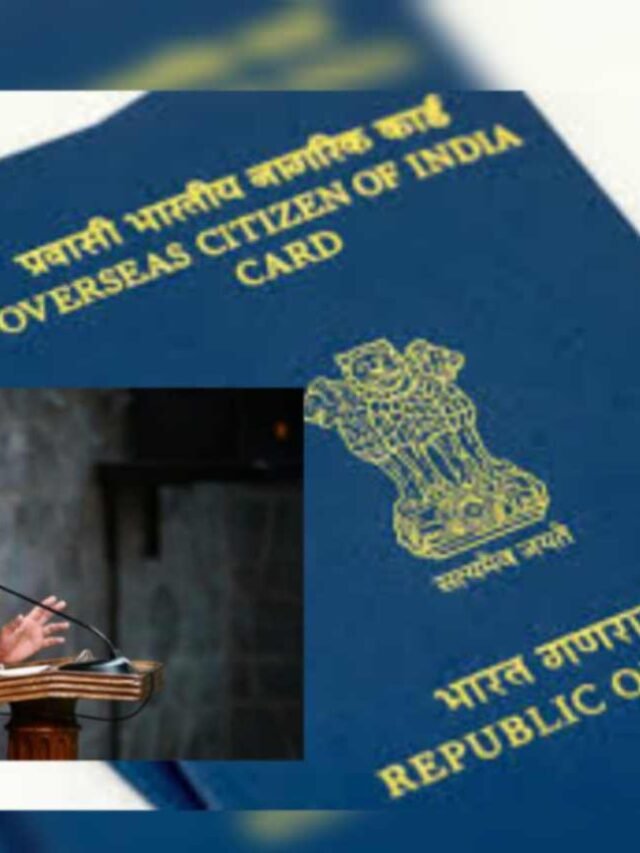Introduction of Section 506 IPC: – In layman’s terms, intimidation involves threatening someone and forcing them to behave or act in a certain way. In other simple words, threaten someone so that they comply with the intimidator’s desires and are forced to do that they’re not obliged by law to do or omit to do so in order to avoid the threat.
Criminal intimidation is outlined in Sec 503 of the Crpc. It is also necessary to study Section 503, which explains criminal intimidation, in order to understand the penalties for criminal intimidation u/S 506 of the IPC.
Section 503 IPC,1860
According to Sec. 503 of the IPC, anyone who threatens another individual or an individual they are actually interested in with:
- A physical damage to his or her person,
- Damage to his or her reputation,
- A loss of their possessions,
- An act intended to alarm/frighten that person, and
- Forces them to do something they are not lawfully obligated to do, or omit to perform something they are legally obligated to do, in order to prevent the execution of such fear/threat, is committing an act of criminal intimidation.
Essentials Elements
Under IPC, a threat does not have to be direct. Even if the threat is made in public or to a third party, it may be considered illegal intimidation. It is equally critical to emphasize that the essence of such a threat must be real and genuine. If the one who is threatening the other is incapable of carrying out the threat, he or she will not be charged with criminal intimidation u/s 503 of the IPC.
Section 506 IPC, 1860
The first segment of Sec 506 of the Indian Penal Code, 1860 specifies that if a person is found guilty of criminal intimidation, he or she shall be penalized with a term of imprisonment of up to 2 years, a penalty, or both.
If a person threatens to cause death, grave injury, or damage to any property by fire, the criminal offence is penalized by imprisonment for a term of up to 7 years, a penalty, or both.
If the parties reconcile and resolve the matter, and the complainant decides to withdraw the accusations against the accused, the offence u/s 506 is a compoundable offence.
When a male threatens a woman with unchastity, the punishment is either imprisonment for a term that can extend up to seven years, a fine, or both.
When it comes to the first part of Section 506, an offence u/s 506 is non-cognizable, bailable, and compoundable by the party who was threatened, and it is non-compoundable when it falls under the second part of Sect 506.
Exception
The offence under Sec 506 (part 2) can not be properly compounded, as per Sec 320 of the CrPC, 1973. However, a withdrawal from prosecution may be allowed in a justifiable circumstance. If the bail is rejected by a Magistrate of 1st Class, a new application may be filed in the Court Of Session. If the case is still rejected, it may be appealed to the H.C.
threat’s nature and scope
The present sec 506 explanation is basically new because the words “distress” and “terror” have been replaced with the term “alarm,” which is confined to the criminal offence when the effect is to cause severe agony. The terms used previously were not as frightening and did not accurately indicate the level of the threat that a victim actually suffered. This was done because the anguish and mental torture created by harm under this provision as a result of intimidation can often be as severe as, if not worse than, the physical harm.
Section 507 IPC, 1860
Sect 506 & 507 of the IPC both provide provisions for the punishments of criminal intimidation, which is specified u/s 503 of the IPC.
Section 507 is correlative to Section 506, and it provides for criminal intimidation via anonymity messaging as well as an unlawful inducement ( the act or process of inducing). Many persons lack the courage to directly threaten someone, so they resort to illegal intimidation through an anonymous email or a letter signed with a fake identity, or they conceal their name & location of residence.
In such cases, the offence imposes a 2-year imprisonment in addition to the punishment specified in Sec. 506. Sec. 507, offences are bailable, non-cognizable, non-compoundable, and triable by a Magistrate of the 1st Class. The essential ingredients of this Section are the same as in Sec. 503, except that the threat is made either anonymously or to hide the identity and whereabouts of the person who makes the threat. It is not essential to hide both the residence and the identity for an offence to be penalized under this provision. The punishment for an offence u/s 507 is more severe than the punishment for an offence u/s 506 because the punishment u/s 507 is combined with the punishment under section 506 IPC.
Kanshi Ram v. State, 2000
In this particular instance, the complainant stated in his case diary statement that the petitioner had ordered his security guards to beat the reporters at the relevant period. The petitioner’s precise words, as per the complaint, were “Maro Salon Ko.” However, the complainant never stated in his statement that the purported threat had alarmed him.
In contrast, the case demonstrated unequivocally that, notwithstanding the alleged intimidation, the complainant and other media personnel didn’t retrace their steps. As a result, the Delhi H.C. ruled that a mere threat is not an offence. As a result, the petitioner’s alleged threat did not fall under the offence of Sec 506 IPC. As a result, no charges u/s 506 IPC could be instituted against the petitioner on the grounds of the aforementioned facts.
Conclusion
Sec 506 of the IPC is divided into 2 parts, the first of which is a less serious type of criminal intimidation and the second of which is a more serious kind, and so the penalty is imposed appropriately. Criminal intimidation is precisely described in the IPC, and it seeks to encompass all forms of criminal intimidation. Being charged with a crime, no matter how minor or serious a crime. An accused facing criminal charges u/s 506 faces severe sanctions and penalties, including a prison sentence, even having a previous record if convicted, as well as the loss of relationships and future employment prospects etc.
Many people are using false accusations to take revenge by lodging a complaint under criminal intimidation. With successive amendments, it is envisaged that Sec 506 would become more comprehensive and in accordance with technical advancements, social media offences, and social developments.

























